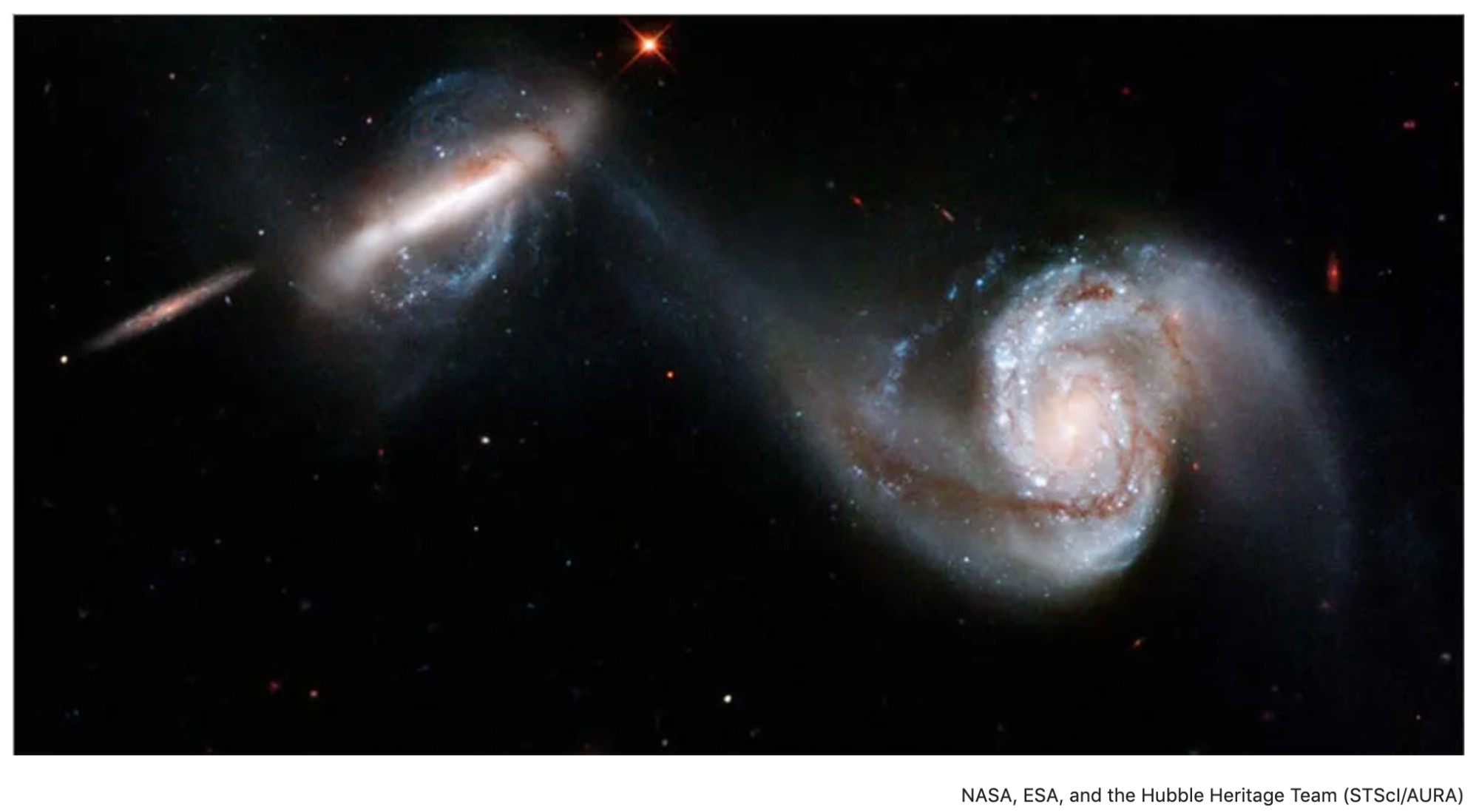[As Published in Nature December 6th, 2019]
...The model I outline here is inspired by and adapted from the work of Peter Coleman, a professor at Columbia’s Teachers’ College, whose expertise is in finding resolutions to situations of extreme conflict. Coleman and his collaborators characterize social interactions apparent in multicultural organizations in the language of dynamical systems. This is a language that is very familiar to astronomers who spend their lives thinking about analogously complex systems, influenced by physical processes on multiple scales. In many physical systems, microscopic effects can manifest with macroscopic consequences. In my own field of galaxy evolution, the fusion of atoms influences the evolution of stars, the collective dynamics of stars shapes galaxies, and galactic interactions play a key role in the formation of the structures we see in the Universe. Moreover, these interactions are mutual, affecting all galaxies involved in ways that can amplify their influence through self-reinforcing feedback loops. Merging galaxies are stunning examples of the power of such self-reinforcing loops: as the two galaxies approach they suffer distortions due to each other’s tidal fields; these distortions convert orbital energy to internal energy so that the orbits decay; the decay of the orbits in turn enhances the tidal interaction and accelerates the merger rate.
Coleman’s work was instrumental in helping me piece together my day-to-day experiences as a professor in science with what I had learned from colleagues in social science and psychology and thus to fill in the puzzle of the bigger picture: how the individual (what astronomers might term ‘microscopic’) dynamics within our own communities can, despite our best intentions, collectively manifest as (‘macroscopic’) barriers to admission and advancement of incoming groups that differ from those already present; and how these dynamics can reinforce each other to result in unwelcoming, unproductive work environments.
Any community seeking to encourage diverse perspectives needs to recognize these dynamics. From my perspective as a white woman in astronomy, my academic community has already evolved from being dominated by and working effectively as a single culture (monoculture), and is transitioning through a difficult period when two or more cultures are present, but in tension with each other (multiculture). However, for the full potential of different groups to be jointly realized, we need to establish a productive polyculture where the entire range of viewpoints and talents are effectively utilized.
